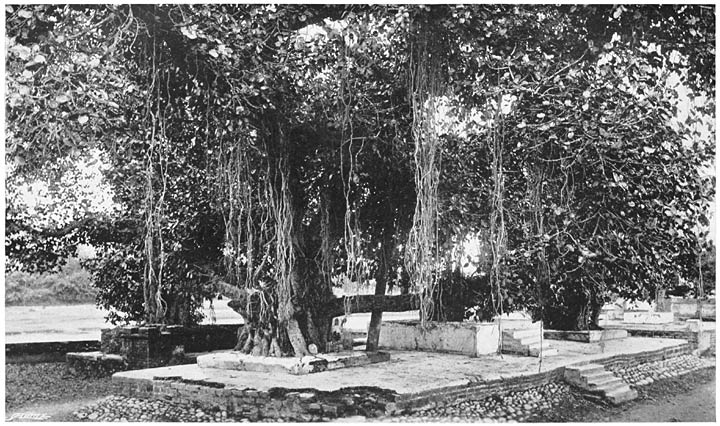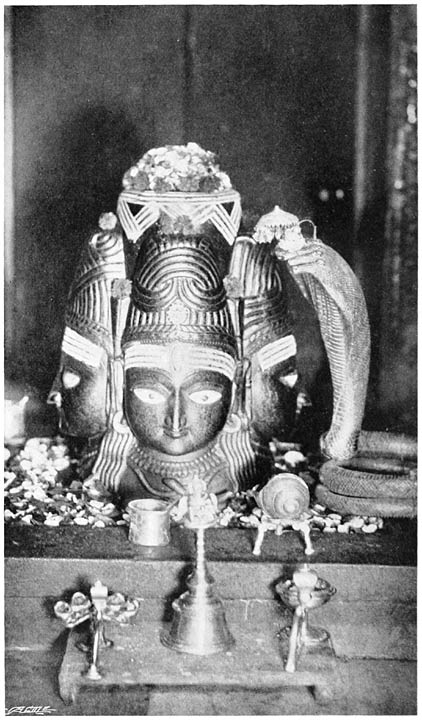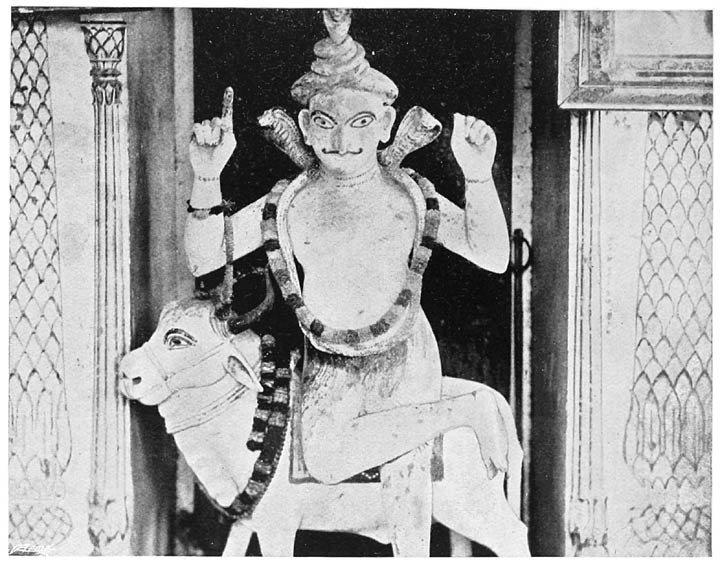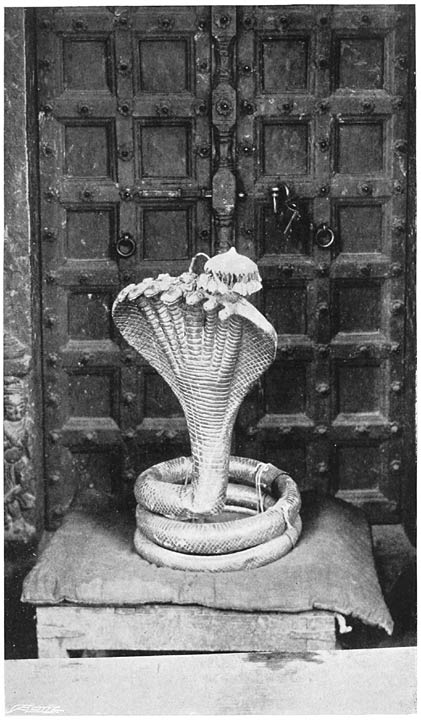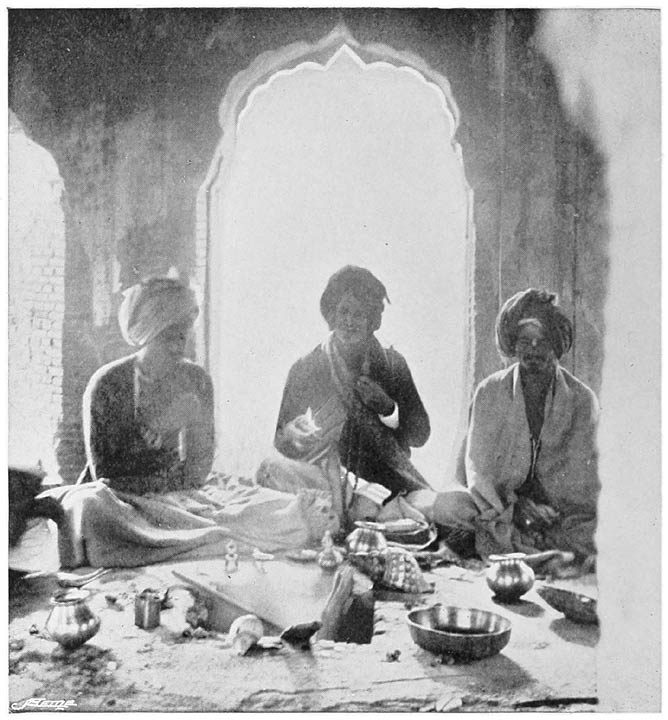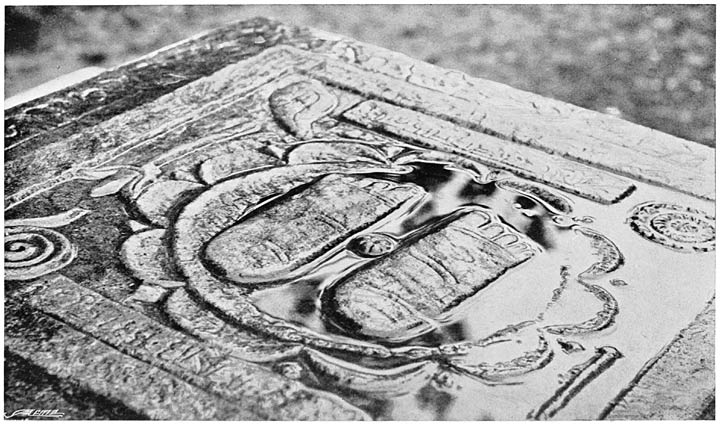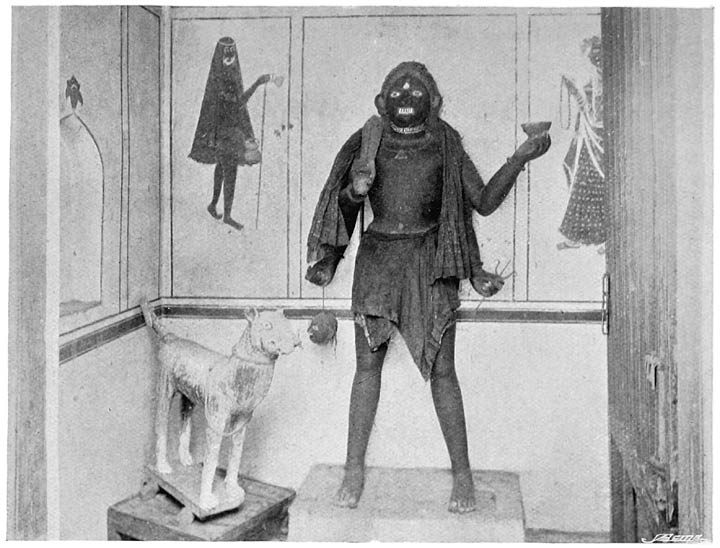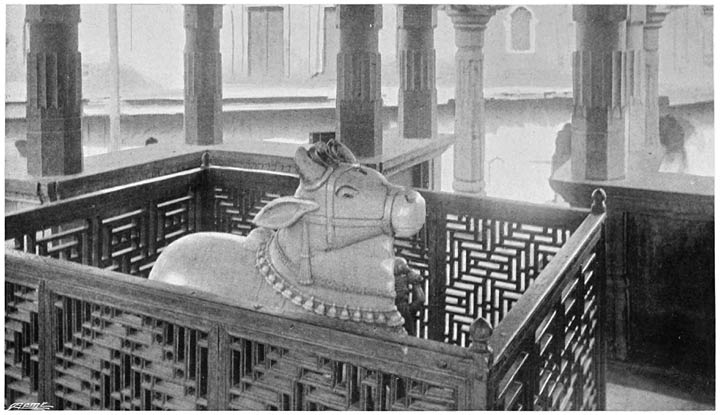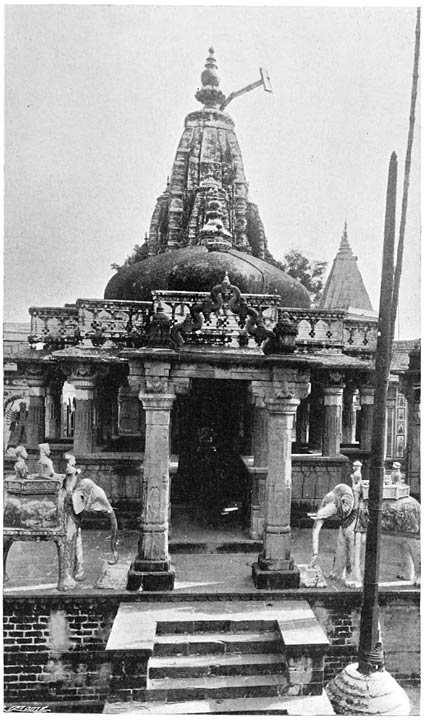“Academy,” the, London, v.d.
“Aîn-i-Akbari,” translation by Professor Blochmann
and Colonel Jarrett, Calcutta, v.d.
“Asiatic Quarterly Review,” London, v.d.
“Asiatic Researches,” Calcutta, v.d.
“Athenæum,” London, v.d.
Atkinson, E. T., “Himâlayan Gazetteer,” 3 vols.,
Allahabad, 1882–84.
Aubrey, J., “Remaines of Gentilisme and Judaisme,”
edited by J. Britten, Folk-lore Society, London, 1881.
Ball, V., “Jungle Life in India,” London, 1880.
Barth, A., “Religions of India,” London, 1882.
Beal, S., “Travels of Fah Hian and Sangyun,” London,
1869.
Beale, T. W., “Oriental Biographical Dictionary,”
Calcutta, 1887.
Benjamin, S. G. W., “Persia and the Persians,” London,
1887.
Bernier, F., “Travels in the Moghul Empire,” edited by
A. Constable, London, 1891.
Bholanâth Chandra, “Travels of a Hindu,” 2 vols.,
London, 1869.
Black, G. B., “Folk Medicine,” Folk-lore Society,
London, 1883.
Brand, J., “Observations on Popular Antiquities,”
London, 1877.
Briggs, Lieut.-Col. J., “History of the rise and fall of the
Muhammadan Power in India till the year 1612, by Muhamad Qâsim
Farishta,” 4 vols., London, 1829.
Buchanan, F. H., “Eastern India,” 3 vols., London,
1833.
Burton, R., “Anatomy of Melancholy,” London, 1883.
Burton, Sir R., “Arabian Nights,” 12 vols., London,
1894.
“Calcutta Review,” Calcutta, v.d.
Campbell, A., “Santâl Folk-tales,” Pokhuria,
1891.
Campbell, J. F., “Popular Tales of the West Highlands,”
Glasgow, 4 vols., 1890.
Campbell, Major-General J., “A Personal Narrative of Thirteen
Years’ Service among the Wild Tribes of Khondistan,”
London, 1864.
Campbell, J. S., “Notes on the Spirit Basis of Belief and
Custom,” Bombay, 1885. [328]
Carnegy, P., “Notes on the Races, Tribes and Castes inhabiting
the Province of Oudh,” Lucknow, 1868.
Chambers, R., “Book of Days,” 2 vols., London,
n.
d.
Chevers, N., “A Manual of Medical Jurisprudence for
India,” Calcutta, 1870.
Clouston, “Popular Tales and Fictions,” 2 vols.,
Edinburgh, 1887.
Colebrooke, H. P., “Miscellaneous Essays,” London,
1837.
“Contemporary Review,” the, London, v.d.
Conway, M. D., “Demonology and Demon Lore,” 2 vols.,
London, 1879.
Cooper, W. M., “Flagellation and the Flagellants,”
London, 1870.
Cox, Sir G. W., “Introduction to the Science of Comparative
Mythology and Folk-lore,” London, 1881.
Cox, Sir G. W., “Mythology of the Aryan Nations,” 2
vols., London, 1870.
Cox, Miss M. R., “Cinderella,” Folk-lore Society,
London, 1893.
Cunningham, Major-General A., “Archæological Survey
Reports,” Calcutta, v.d.
Cunningham, Major-General A., “The Bhilsa Topes, a Buddhist
Monument in Central India,” London, 1854.
“Dabistân,” the, Translation of, by D. Shea and A.
Troyer, Paris, 1843.
Dalton, Col. E. T., “Descriptive Ethnology of India,”
Calcutta, 1872.
Dey, Lâl Bihâri, “Folk-tales of Bengal,”
London, 1879.
Dey, Lâl Bihâri, “Govinda Sâmanta,”
London, 1874.
De Gubernatis, A., “Zoological Mythology, or the Legends of
Animals,” 2 vols., London, 1872.
Dowson, Professor J., “A Classical Dictionary of Hindu
Mythology and Religion, Biography, History and Literature,”
London, 1879.
Duncker, Max, “The History of Antiquity,” translation by
E. Abbot, 5 vols., London, 1877–83.
Dutt, R. C, “History of Civilization in Ancient India,”
3 vols., Calcutta, 1889.
Dyer, T. F. T., “Popular Customs,” London, 1876.
Dyer, T. F. T., “Folk-lore of Shakespeare,” London,
1883.
Elliot, Sir H. M., “Supplement to the Glossary of Indian
Terms,” Roorkee, 1860.
Elliot, Sir H. M., “History of India as told by its own
Historians,” edited by Professor Dowson, 8 vols., London,
1867–77.
Elliott, Sir C. A., “Settlement Report of
Hoshangâbâd,” Allahabad, 1867.
“Encyclopædia Britannica,” 9th edition, Edinburgh,
1875.
Ewald, H., “Antiquities of Israel,” translation by H. S.
Solly, London, 1876.
Ewald, G. H. A., “The History of Israel,” translation by
R. Martineau, 4th edition, London, 1867–85.
Farrer, J. A., “Primitive Manners and Customs,” London,
1879. [329]
Fausböll, V., “The Buddhist Jâtakas,”
Copenhagen, 1861.
Ferguson, J., “History of Indian Architecture,” London,
1878.
Ferguson, J., “Tree and Serpent Worship,” London,
1868.
Ferrier, J. P., “Caravan Journeys and Wanderings in Persia,
Afghânistân, Turkestân and
Belûchistân,” London, 1856.
“Folk-lore,” London, v.d.
“Folk-lore Record,” London, v.d.
Forbes, H. O., “A Naturalist’s Wanderings in the Eastern
Archipelago,” London, 1885.
Forbes, J., “Oriental Memoirs,” London, 1813.
Forlong, J. G. R., “Rivers of Life,” 2 vols., London,
1883.
Forsyth, Captain J., “Highlands of Central India,” 2nd
edition, London, 1889.
“Fortnightly Review,” London, v.d.
Frazer, J. G., “The Golden Bough,” 2 vols., London,
1890.
Frazer, J. G., “Totemism,” London, 1887.
Frere, Miss M., “Old Deccan Days,” London, 1870.
Führer, A., “Monumental Antiquities and Inscriptions of
the North-West Provinces and Oudh,” Allahabad, 1891.
Ganga Datt Upreti, “Proverbs and Folk-lore of Kumaun and
Garhwâl,” Ludhiana, 1894.
“Gazetteer of Berâr,” Bombay, 1870.
“Gazetteer of Bombay,” Bombay, v.d.
“Gazetteer of Central Provinces,” Nagpur, 1870.
“Gazetteer of Himâlayan Districts of the North-Western
Provinces,” by E. T. Atkinson, 3 vols., Allahabad,
1882–84.
“Gazetteer of Oudh,” 3 vols., Allahabad, 1870.
“Gazetteer of Râjputâna,” 3 vols., Calcutta,
v.d.
“Gesta Romanorum,” translation by C. Swan and W. Hooper,
London, 1888.
Goldziher, I., “Mythology among the Hebrews,”
translation by J. Martineau, London, 1877.
Gordon-Cumming, Miss C. F., “From the Hebrides to the
Himalayas,” 2 vols., London, 1876.
Gregor, Rev. W., “Notes on the Folk-lore of the North-East of
Scotland,” Folk-lore Society, London, 1881.
Grierson, G., “Bihâr Peasant Life,” Calcutta,
1885.
Grimm, “Teutonic Mythology,” translation by J. S.
Stallybrass, 4 vols., London, 1880–88.
Grimm, “Household Tales,” translated by Margaret Hunt, 2
vols., London, 1884.
Grote, G., “History of Greece,” 12 vols., London,
1869.
Growse, F. S., “Mathura, a District Memoir,” Allahabad,
1885.
Growse, F. S., “Râmâyan of Tulasi
Dâs,” Allahabad, 1877–80.
Gunthorpe, Major E. J., “Notes on the Criminal Tribes of
Bombay, Berar and the Central Provinces,” Bombay, 1882.
Hardy, E. S., “Manual of Buddhism,” London, 1880.
[330]
Hartland, E. S., “Science of Fairy Tales,” London,
1891.
Hartland, E. S., “Legend of Perseus,” London,
1894–95.
Haug, M., “Aitareya Brâhmanam of the Rig Veda,” 2
vols., Bombay, 1863.
Hearn, W. E., “The Aryan Household,” London, 1879.
Heber, Bishop R., “Narrative of a journey through the Upper
Provinces of India,” 2 vols., London, 1861.
Henderson, W., “Notes on the Folk-lore of the Northern
Counties of England and the Border,” Folk-lore Society, London,
1879.
Herklots, G. A., “Qânûn-i-Islâm,”
Madras, 1863.
Herodotus, translated by G. Rawlinson, 4 vols., 3rd edition, London,
1875.
Hewitt, J. F., “The Ruling Races of Prehistoric Times,”
London, 1894.
Hislop, Rev. S., “Papers relating to the Aboriginal Tribes of
the Central Provinces,” Nagpur, 1866.
Hughes, T. P., “Dictionary of Islâm,” London,
1885.
Hunt, R., “Popular Romances of the West,” 3rd edition,
London, 1881.
Ibbetson, D. C. J., “Panjâb Ethnography,”
Calcutta, 1883.
“Indian Antiquary,” the, Bombay, v.d.
Jacobs, J., “Celtic Fairy Tales,” London, 1892.
Jacobs, J., “English Fairy Tales,” London, 1890.
Jacobs, J., “Indian Fairy Tales,” London, 1891.
Jones, W., “Finger-ring Lore,” London, 1877.
Knowles, J. H., “Folk-tales of Kashmîr,” London,
1888.
Lane, E. W., “Account of the Manners and Customs of the Modern
Egyptians,” 2 vols., London, 1871.
Lang, A., “Custom and Myth,” London, 1885.
Lang, A., “Myth, Ritual and Religion,” London, 1887.
Leland, C. G., “Etruscan Roman Remains in Popular
Tradition,” London, 1892.
Letourneau, C., “Sociology based on Ethnography,”
London, 1881.
Lubbock, Sir J., “Origin of Civilization and Primitive
Condition of Man,” London, 1882.
Lyall, Sir A. C., “Asiatic Studies,” London, 1882.
Maclagan, E. D., “Panjâb Census Report,” Calcutta,
1892.
Malcolm, Sir J., “Memoir of Central India,” 2 vols.,
London, 1823.
Manning, Mrs., “Ancient and Mediæval India,” 2
vols., London, 1869.
“Manu, Institutes of,” translated by Sir W. Jones and G.
C. Haughton, London, 1869.
“Memoirs of the Anthropological Society of London,” 3
vols., London, 1865–70.
Mîr Hasan Ali, Mrs., “Observations on the
Musalmâns of India,” 2 vols., London, 1832.
Moens, S. M., “Bareilly Settlement Report,” Allahabad,
1874.
Muir, J., “Original Sanskrit Texts,” 5 vols., London,
1868–70. [331]
Müller, F. Max, “Chips from a German Workshop,” 4
vols., London, 1867.
Müller, F. Max, “History of Ancient Sanskrit
Literature,” London, 1859.
“North Indian Notes and Queries,” Allahabad, v.d.
O’Brien, E., “Glossary of the Multâni
Language,” Lahore, 1881.
Oldfield, H. A., “Sketches from Nepâl,” 2 vols.,
London, 1880.
Oldham, W., “Memoirs of the Ghâzipur District,” 2
vols., Allahabad, 1870–76.
“Panjâb Notes and Queries,” 4 vols., Allahabad,
1883–87.
“Proceedings Asiatic Society of Bengal,” Calcutta,
v.d.
“Proceedings Royal Asiatic Society,” London, v.d.
Rajendra Lâla Mitra, “Indo-Aryans,” 2 vols.,
London and Calcutta, 1881.
Reid, J. R., “Azamgarh Settlement Report,” Allahabad,
1881.
Rhys, J., “Lectures on the Origin and Growth of Religion, as
illustrated by Celtic Heathendom,” London, 1888.
Risley, H. H., “Tribes and Castes of Bengal,” 2 vols.,
Calcutta, 1891.
Robertson-Smith, W., “Kinship and Marriage in Early
Arabia,” Cambridge, 1885.
Rousselet, L., “India and its Native Princes,” London,
1890.
Rowney, H. B. (Shoshee Chunder Dutt), “Wild Tribes of
India,” London, 1882.
Schliemann, H., “Ilios,” London, 1880.
Schrader, O., “Prehistoric Antiquities,” London,
1890.
Scott, Sir W., “Letters on Demonology and Witchcraft,”
London, 1884.
Sherring, M. A., “The Sacred City of the Hindus,”
London, 1868.
Sherring, M. A., “Hindu Tribes and Castes,” 3 vols.,
Calcutta, 1872–81.
Sleeman, W. H., “Journey Through the Kingdom of Oudh,” 2
vols., London, 1858.
Sleeman, W. H., “Rambles and Recollections of an Indian
Official,” 2 vols., edited by V. A. Smith, London, 1893.
Spencer, H., “Principles of Sociology,” 3rd edition, 2
vols., London, 1885.
Starcke, C. N., “The Primitive Family,” London,
1889.
Stokes, Miss M., “Indian Fairy Tales,” London, 1880.
Tawney, C. H., “Katha Sarit Sâgara,” 2 vols.,
Calcutta, 1880.
Temple, R. C., “Legends of the Panjâb,” Bombay,
v.d.
Temple, R. C., “Proper Names of Panjâbis,” Bombay,
1883.
Temple, R. C., “Wideawake Stories,” Bombay, 1884.
Tennent, Sir J. E., “Ceylon,” 2nd edition, 2 vols.,
1859.
Thomas, E., “Chronicles of the Pathân Kings of
Delhi,” London, 1871.
“Thugs, Illustrations of the History and Practices of
the,” London, 1837.
Tod, J., “Annals and Antiquities of
Râjasthân,” 2 vols., Calcutta, 1884.
Trumbull, H. C., “The Blood Covenant,” London, 1887.
[332]
Tylor, E. B., “Researches into the Early History of
Mankind,” London, 1865.
Tylor, E. B., “Primitive Culture,” 2 vols., London,
1873.
Wake, C. S., “Serpent-worship,” London, 1888.
Ward, W., “View of the History, Literature, and Religion of
the Hindus,” Madras, 1863.
Westropp, H. M., “Primitive Symbolism,” London,
1885.
Wheeler, J. T., “History of India,” 3 vols., London,
1867–74.
Whitney, W. D., “Oriental and Linguistic Studies,” New
York, 1873.
Wilde, Lady, “Ancient Legends, Mystic Charms and Superstitions
of Ireland,” London, 1888.
Williams, Sir Monier, “Sanskrit-English Dictionary,”
Oxford, 1872.
Williams, Sir Monier, “Brâhmanism and Hinduism,”
4th edition, London, 1891.
Wilson, J., “Indian Caste,” 2 vols., Bombay, 1877.
Wilson, H. H., “Works,” 12 vols., London,
1862–71.
Wilson, H. H., “Vishnu Purâna,” London, 1840.
Wilson, J., “Karnâl Settlement Report,” Lahore,
1886.
Wright, D., “History of Nepâl,” Cambridge,
1877.
Wright, F. N., “Memorandum on the Agriculture of
Cawnpur,” Allahabad, 1877.
Yule, H., “The Book of Ser Marco Polo,” 2 vols., London,
1871. [333]



